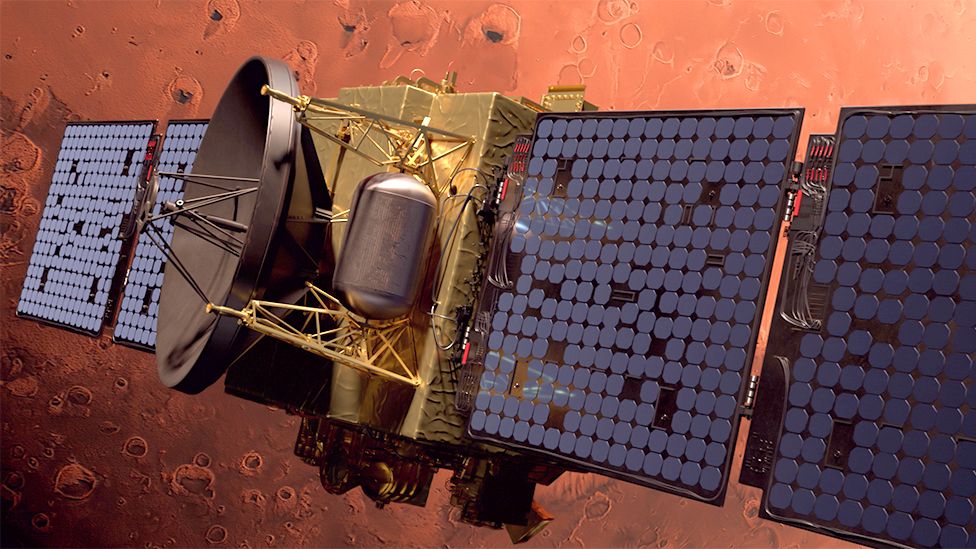Emirates Mars Mission Hope probe lines up historic Mars manoeuvre
History beckons for the United Arab Emirates as it seeks on Tuesday to place a probe around Mars.
The Hope spacecraft, launched from Earth seven months ago, is about to reach the decisive moment in its long journey – orbit insertion.
Currently moving at over 120,000km/h (75,000mph), it must fire its braking engines for 27 minutes to be sure of being captured by the planet’s gravity.
Success would enable Hope to begin its mission to study Mars’ climate.
“We’re entering a very critical phase,” said project director, Omran Sharaf. “It’s a phase that basically defines whether we reach Mars, or not; and whether we’ll be able to conduct our science, or not.
“If we go too slow, we crash on Mars; if we go too fast, we skip Mars,” he told BBC News.
Hope is the first of three missions to arrive at the Red Planet this month. On Wednesday, the Chinese Tianwen-1 orbiter will also try to make it into orbit, while the Americans turn up on the 18th with another big rover.
For Hope, everything rides on Tuesday’s orbit insertion manoeuvre. In the past couple of months, engineers have trimmed the spacecraft’s trajectory so that it reaches the planet at precisely the right moment in space and time to begin the braking burn.
Mission control at the Mohammed bin Rashid Space Center (MBRSC) in Dubai will have some data streaming back on the performance of Hope’s thrusters, but there is nothing anyone can do to intervene if something goes awry.
Mars and Earth are presently separated by 190 million km, meaning it would take a radio command fully 11 minutes to reach the probe – too long to make a difference. Hope must rely on autonomy to complete the manoeuvre.
“It’s definitely going to be nerve-racking; just thinking about it gives me goose-bumps,” said propulsion engineer Ayesha Sharafi. “But we do have a fault-protection system in place that can compensate for any problems that might happen during the burn, so I think we’re in a good position for Mars obit insertion to happen successfully.”
The confirmation signal that the braking burn has started should be received at Earth just after 19:40 Gulf Standard Time (15:40 GMT). This will come through the US space agency’s (Nasa) Deep Space Network of radio dishes.
Hope carries roughly 800 kilos of fuel. About half this mass will be consumed by the six thrusters involved in the 27-minute-long manoeuvre.
Shortly after the engines shut down, the spacecraft will disappear behind Mars as its trajectory bends into the planned initial orbit. Once again, there will be an anxious wait at the MBRSC while the team hangs on Nasa’s dish network re-acquiring Hope’s signal.
If Tuesday’s efforts are successful they will be rewarded with some fascinating science in the months ahead.








